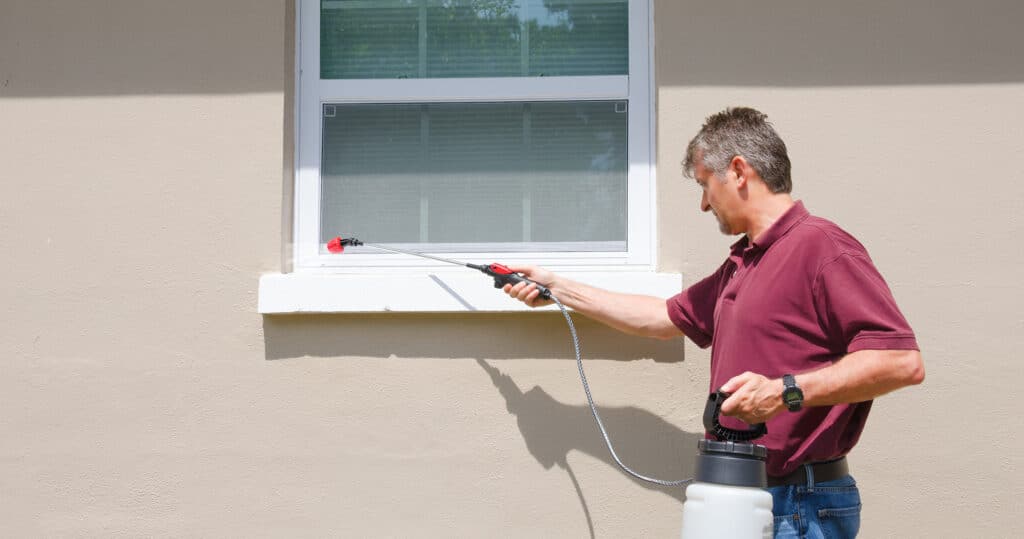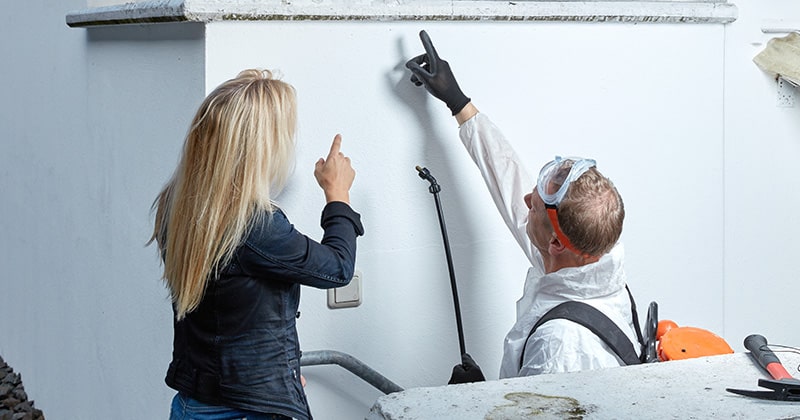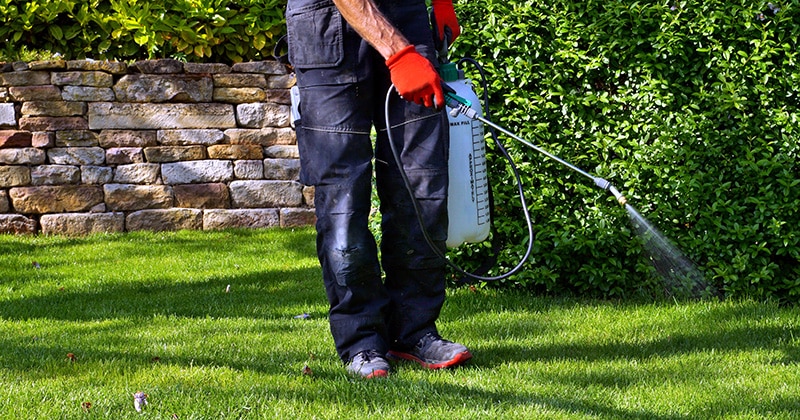

Are you trying to crack the code of profit margins in the pest control business? Feel like you’re playing a never-ending game of ‘Whack-a-Rodent’ with your finances? You’ve come to the right place.
Welcome to your go-to guide for turning your pest control business into a profit machine.
In this article, we’ll help you dig deeper into profit margins than a termite in a woodpile. We’ll explore everything you need to know about how to make a profit. From calculating profit margins to boosting your bottom line, we have you covered.
Ready to exterminate your financial woes? Let’s get started!
What Is the Average Profit Margin for a Pest Control Company?

Ever wondered what the ‘pest’ in ‘pest control’ really means? Profit Every Single Time!
Jokes aside, understanding your profit margin is crucial. Much like knowing a harmless garden spider from a venomous black widow, it’s essential for survival.
Think of your profit margins as the financial yardstick of your business. This metric measures how much of your revenue remains after you’ve cleared your expenses.
Average Profit Margin for Pest Control Companies in the US
Now, let’s talk numbers.
The average profit margin for pest control companies in the US hovers around 20%. But remember, this isn’t a one-size-fits-all figure.
Various factors can impact your profit margin.
Geographic location, for example, can impact profits for a few reasons. Climate plays a big role in the types of pests coming into a home or business. That would then impact how often people need services and what those services would cost.
Company size and business strategies also impact your bottom line.
But understanding your profit margin is more than just a numbers game. It’s a strategy for survival and growth.
RELATED ARTICLE: How to Calculate Profit Margin for a Pest Control Business
How Does the Size of a Pest Control Business Impact Its Overall Profitability?

Size matters in the pest control industry, but not in the way you might think. It’s not about the size of the pests; it’s about the size of your operation.
It doesn’t matter whether you’re a one-person show or a multi-state enterprise. The size of your business can significantly influence your profitability either way.
Small Pest Control Companies: The Mouse
Small pest control businesses often operate like a nimble mouse. How? They dart in and out of opportunities with agility.
Pros
Selective service—Since you’ll be working with fewer resources, you’ll likely take on only select clients. You won’t be accepting every job and overloading your schedule.
Personalized service—Being selective gives you the time and ability to better personalize your services. The result is stronger customer relationships and more loyal clients.
Low overhead—Another key advantage of running a smaller operation is lower overhead costs. This also helps you to operate more efficiently in a local market.
Cons
Although smaller pest control businesses have their benefits, they have their drawbacks, too.
Limited resources—Smaller businesses typically have fewer resources. This can constrain growth potential and make it more difficult to compete in the market.
Smaller budgets —This is especially restricting when it comes to marketing. With less money for exposure, you’ll have to invest more time in handling your own marketing strategies.
Handling larger contracts—Having a smaller team can make it harder to handle large contracts.
Large Pest Control Companies: The Ant Supercolony
Large pest control companies function more like an expansive ant supercolony. You have different teams in separate locations joined by a central hub.
Pros
Extensive resources—Large companies usually have an intricate network of resources. Large companies have more access to funding, equipment, and hiring more employees.
Expanded territory—With all these resources, you can handle bigger jobs and a larger service area. Larger companies have the capacity to take on more business.
Supercolonies work together, stretching out over a large area. Likewise, a large pest control company can span multiple states.
Cons
But just like a small business, a large company isn’t without its pitfalls.
Overly Complex—Operating on a larger scale often introduces complexity in your operations. For example, it can be harder to retain employees and maintain service standards. It can also be more challenging to manage a wide geographic service area.
Increased expenses—You’ll have increased overhead costs when you start new jobs. You have more equipment and trucks to maintain. You also have larger and more diverse areas to market to. You’ll likely have to hire dedicated marketing staff as well.
Choose the Company Size that Works for You
At the end of the day, it’s not about being the biggest fish in the pond but about being the right fish in the right pond.
Your success will depend on many factors beyond size. This includes your service quality, marketing strategies, and adaptability.
FROM ONE OF OUR PARTNERS: Pricing for Profit
What Are the Key Factors that Determine the Profitability of a Pest Control Business in the US?

Understanding the profitability of your pest control business is a complex puzzle. It’s not just about one piece—the revenue. Several pieces must fit together to reflect all the costs of running your business.
Market Conditions and Competition
The pest control industry is dynamic. Market conditions and competition vary from region to region.
In saturated markets, pricing pressure can thin your profit margins. On the other hand, less crowded markets let you set pricing that reflects the value of your services.
Geographic Location
The number and type of pests in your market can vary significantly by location. For example, coastal areas have unique pest challenges compared to inland regions.
Being aware of your area’s pest issues will give you an idea of what services to offer and prices to set.
The local climate also plays a role. Warmer climates tend to have more year-round pest activity. In contrast, colder regions will have more seasonal fluctuations.
Adapting your services to your local climate is one of the best ways to improve your revenue and profits.
Service Offering
The range of services your pest control company offers can significantly affect profitability.
Smaller companies tend to focus on residential pest control. Medium to larger companies may also cater to commercial clients. Or they may specialize in a unique niche.
Focusing services to meet customer needs is like finding the right bait for the right pest. It’s vital for discovering your customer base and maximizing profitability.
Pricing Strategies
Another factor that will affect profits is pricing. Your pricing must cover costs, attract customers, and generate a profit.
Striking this balance is an art.
Value-based pricing, for instance, is often a profitable pricing method. This model sets prices based on the value of your pest control services rather than by the hour.
FROM ONE OF OUR PARTNERS: Flat Rate: The Pricing Method Contractors and Homeowners Prefer
Operational Efficiency
Operational efficiency isn’t just a buzzword. It’s the linchpin of your pest control business.
Operational efficiency means taking full advantage of your company’s resources. This allows you to generate more profits without higher operating costs.
Let’s go back to the ant colony that stretches across states. Each ant has a specific role, and when everyone performs, the colony thrives.
Here’s how to make your pest control business operations more efficient:
Resource Allocation
Properly allocating resources minimizes downtime and reduces costs. Resources are everything from your technicians to their equipment.
For example, scheduling software optimizes routes and job assignments. This ensures that you get the most out of each workday.
Inventory Management
Overstocking can tie up capital, while understocking can lead to service delays.
Try using an inventory management system to keep track of your supplies. That way, you can be sure to have all the equipment, pesticides, and other materials you need when you need them.
Training and Skill Development
Your team of pest control experts is another opportunity to become more efficient.
Technicians who can diagnose and treat pest issues more swiftly can handle more jobs. The more jobs you can handle, the more profitable your business will be.
Efficient employees also result in higher customer satisfaction and repeat business. That’s why investing in the training and development of your team can be profitable.
Customer Acquisition and Retention
Of course, the most important factor in profitability is your customers. The more customers you attract and retain, the higher your profit margins.
Here are a few strategies to help your pest control company grow a customer base:
Marketing Strategies
No matter how good your services are, nobody can use them if they don’t know about them. That’s why marketing is essential.
Marketing strategies include digital marketing, referrals, and social media. These are all effective ways to reach your target audience.
Use analytics to measure the ROI of different marketing channels. This will help you adjust your strategies accordingly.
Customer Experience
Once you’ve acquired a customer, the next step is to keep them. Providing exceptional service is key to retention.
Many companies use a customer relationship management system (CRM) to help with retention. A CRM can track your customer interactions and information. Being more informed helps you identify opportunities for upselling or cross-selling services.
Loyalty Programs
Reward your loyal customers with discounts or exclusive offers.
A well-designed loyalty program encourages repeat business. It’s one of the best tools for turning one-time customers into long-term clients.
Seasonal Impact
The pest control industry is not immune to the ebbs and flows of seasonal demand. Just as pests have their active seasons, so does your business.
Understanding seasonal fluctuations will help your company maintain a steady cash flow.
High Demand Seasons
Spring and summer are generally the peak seasons for pest activity. During these months, you’ll likely see an uptick in service requests.
To capitalize on this surge, plan to have adequate staffing and inventory. It’s also a good time to roll out special promotions to attract new customers.
Low Demand Seasons
Of course, this means winter often brings a lull in pest activity and service requests. This downtime can be a double-edged sword. While it offers a respite for your team, it also means reduced revenue.
To counteract the winter lull, consider offering off-season promotions or maintenance packages. Enticing customers with limited-time deals can help sustain income during quieter months.
Cost Control
Managing expenses is like setting up a perimeter around a property. It’s about creating boundaries that unnecessary costs can’t breach.
Let’s look at some strategies to keep your costs in check while keeping the quality of your services.
FROM ONE OF OUR PARTNERS: How to Analyze a Profit & Loss (P&L) Statement
Insurance
Pest control liability insurance can save your business when accidents happen. It also can help cover your client.
Review your insurance policies regularly. Rates and coverage can change, so always be on the lookout for the right coverage at the best rate. Overpaying can eat into your profits.
Equipment Maintenance
Regular equipment maintenance is important. It extends lifespan and reduces repair costs.
Neglecting maintenance can lead to unexpected expenses. You’ll also look unreliable to your customers.
Vehicle Expenses
Fuel, maintenance, and depreciation of vehicles are significant expenses for pest control businesses.
Consider optimizing routes and vehicle choices to minimize costs.
Customer Reviews and Reputation
Your online reputation is the modern-day word of mouth. It’s the billboard that never sleeps. You’re constantly advertising your business to potential customers.
It’s something that can make or break your business. Here are some simple ways to have and maintain a great reputation.
Positive Reviews
Have a positive experience with a customer? Encourage them to leave a review. Use platforms like Google, Yelp, and Facebook.
Positive reviews attract new customers and build trust.
Negative Reviews
Always respond to negative reviews professionally. Seek to resolve customer concerns quickly.
A proactive approach to customer feedback can mitigate potential damage to your reputation.
How Do Pest Control Business Owners Increase Revenues and Minimize Expenses?

Running a profitable pest control business isn’t just about maintaining the status quo.
If you want to stay ahead in the market, you must actively seek revenue opportunities. At the same time, you must manage and minimize your expenses.
Here are some advanced strategies to help you do just that:
Branch Out Your Services
Diversifying your services can help you reach new markets.
Consider adding specialized treatments to attract a broader range of customers. For example, wildlife removal or termite inspections are other popular services.
Implement Digital Pest Management Tools
Incorporate digital tools and software into your operations. Software solutions can streamline scheduling, optimize routes, and clarify customer communication.
These tools increase efficiency and enhance customer experience. The result? Higher retention rates.
Invest in Pest Prevention
Prevention is the best form of pest control, and the same goes for your finances.
Offering preventive maintenance plans can provide a steady source of income. Maintenance plans can be especially great revenue drivers during off-peak seasons.
Cross-Sell and Upsell
Maximize your revenue from existing customers by cross-selling and upselling additional services.
Let’s say you’ve provided a termite treatment for a customer. When you’ve finished, try offering a maintenance package to prevent future issues. This approach can increase the average transaction value and customer lifetime value.
Optimize Pricing Strategies
Regularly review your pricing strategies. Ensure they align with market conditions and your profit objectives.
Consider tiered pricing options or bundling services. They give customers the opportunity to better customize their service. Plus, it often encourages them to buy more.
Employee Training and Incentives
Well-trained technicians are the exterminators of inefficiency and customer dissatisfaction. Investing in skill development will increase service quality.
As a result, your customer loyalty and brand reputation will get a boost, too. You might also consider implementing performance-based incentives to motivate your team even more.
Strategic Partnerships
Explore partnerships with local businesses or organizations. These collaborations can lead to referral opportunities and joint marketing efforts.
This is a great way to reach new customers without significant marketing expenses. Here are some good partner businesses for pest control companies:
- Food and beverage companies
- Realtors
- Manufacturing companies
- Remodeling contractors
- Local hotels
Offer Eco-Friendly Options
Customers are becoming more environmentally conscious.
Offering eco-friendly or “green” pest control options can attract this growing customer base. Plus, it can benefit your reputation.
Leverage Data Analytics
Data will help you detect opportunities. It can also show underperformance in your pest control company. Analyze customer data, service trends, and financial metrics to identify areas for improvement.
Use it to make informed decisions. You’ll optimize operations and increase profitability.
What You Can Do Today to Improve Your Pest Control Profitability?

With time, these strategies will help make your pest control business profitable.
Luckily, there are also some immediate actions you can take today. Most are little to no cost and boost your bottom line:
Quick Customer Survey
Create a short digital survey for your existing customers. Use a platform like SurveyMonkey or Google Forms. Ask pointed questions about the quality of your service, timeliness, and so on. This feedback can guide you toward areas ripe for improvement or expansion.
Limited-Time Promotions
Identify a specific pest problem that’s prevalent in your service area. It could be a sudden surge in ant infestations or a new invasive species. Create a limited-time offer targeting this issue. Promote it on social media platforms. This is great for attracting immediate business and creating a sense of urgency.
Referral Incentives
Create a referral program to reward existing customers and generate new ones. For instance, offer customers a discount on their next service for each new customer they refer. Make the referral process simple. A good example is creating a ‘Refer a Friend’ button in your app or website.
Customer Education & Loyalty Programs
Develop a monthly newsletter that combines educational content with special offers. This dual approach educates and incentivizes your customer. They’ll know you’re an expert and think of you for new jobs.
Streamline Booking Process
Take a good look at your current online booking system. Identify bottlenecks and simplify them. The easier it is for a customer to book your services, the less likely they are to abandon the process.
Inventory Audit
Conduct a thorough inventory check to identify surplus. Run a promotion to clear out excess inventory. It will improve your cash flow and simplify tracking. Knowing your inventory can help you use what you have more effectively.
Community Engagement
Organize a free workshop or webinar on pest prevention. Promote it through local community boards and social media. This establishes expertise and attracts potential new customers.
Navigation
Related Posts


How to Write a Pest Control Contract [Template]
Continue Reading